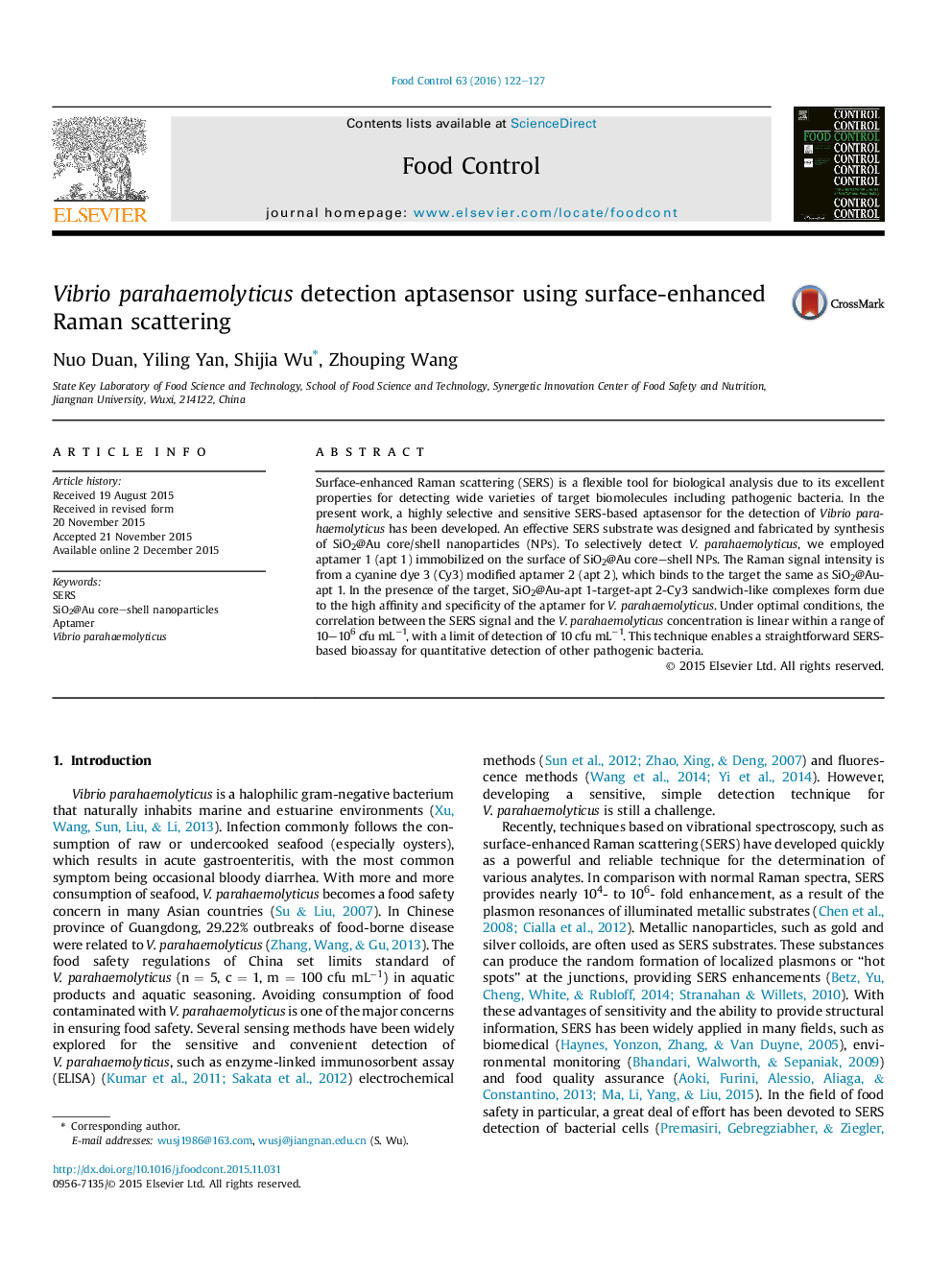| Article ID | Journal | Published Year | Pages | File Type |
|---|---|---|---|---|
| 4559142 | Food Control | 2016 | 6 Pages |
•A SERS-based aptasensor was developed for bacteria detection.•Au@Ag core–shell nanoparticles were used as SERS active substrate.•The method was sensitive and specific by using aptamers as recognition elements.•The technique shows potential for sensitive detection of pathogens in food safety.
Surface-enhanced Raman scattering (SERS) is a flexible tool for biological analysis due to its excellent properties for detecting wide varieties of target biomolecules including pathogenic bacteria. In the present work, a highly selective and sensitive SERS-based aptasensor for the detection of Vibrio parahaemolyticus has been developed. An effective SERS substrate was designed and fabricated by synthesis of SiO2@Au core/shell nanoparticles (NPs). To selectively detect V. parahaemolyticus, we employed aptamer 1 (apt 1) immobilized on the surface of SiO2@Au core–shell NPs. The Raman signal intensity is from a cyanine dye 3 (Cy3) modified aptamer 2 (apt 2), which binds to the target the same as SiO2@Au-apt 1. In the presence of the target, SiO2@Au-apt 1-target-apt 2-Cy3 sandwich-like complexes form due to the high affinity and specificity of the aptamer for V. parahaemolyticus. Under optimal conditions, the correlation between the SERS signal and the V. parahaemolyticus concentration is linear within a range of 10–106 cfu mL−1, with a limit of detection of 10 cfu mL−1. This technique enables a straightforward SERS-based bioassay for quantitative detection of other pathogenic bacteria.
